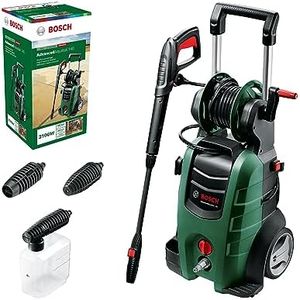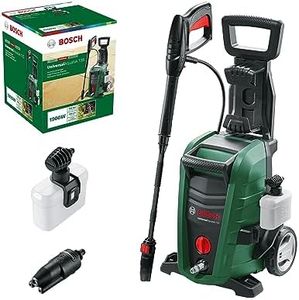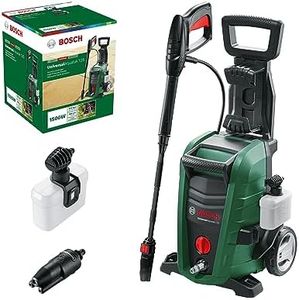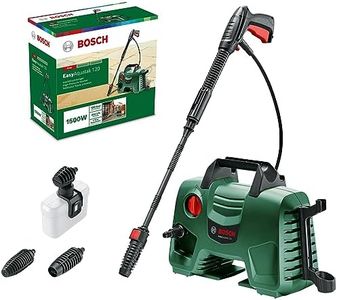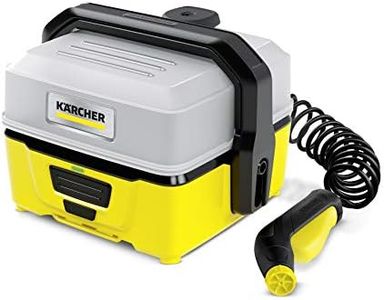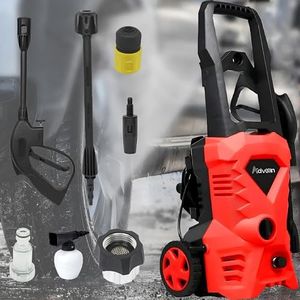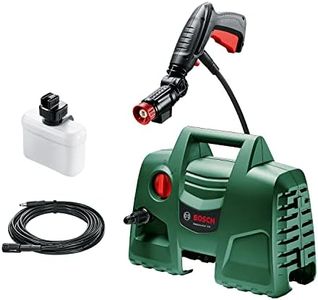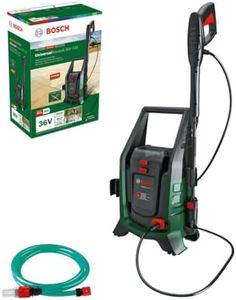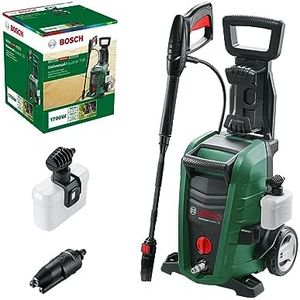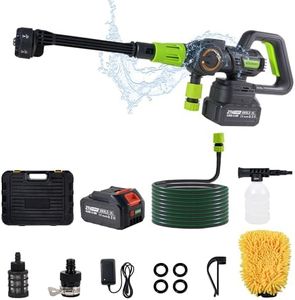We Use CookiesWe use cookies to enhance the security, performance,
functionality and for analytical and promotional activities. By continuing to browse this site you
are agreeing to our privacy policy
10 Best Portable Pressure Washers
From leading brands and best sellers available on the web.Buying Guide for the Best Portable Pressure Washers
Portable pressure washers are handy devices for cleaning anything from cars and bikes to patios, outdoor furniture, and garden tools. Since they are designed to be used on the go, your main focus should be on portability, power, ease of use, and how long they can run on a fill or charge. Think about where and how frequently you'll use this device, and what types of messes you expect to clean. Choosing the right features will mean less hassle and better cleaning results for your specific needs.Water Pressure (PSI)Water pressure, measured in PSI (pounds per square inch), tells you how forcefully the device sprays water. Higher PSI means it can remove tougher dirt and grime, but it can also be too strong for delicate surfaces. Light cleaning tasks, like washing a bike or small patio furniture, typically only need around 300-600 PSI. For medium-duty tasks like cars or balconies, look for something in the 600-1000 PSI range. If you plan to tackle stubborn stains on decks or driveways, you'll need more pressure. Think about the kind of jobs you'll regularly handle; pick a PSI that's high enough to clean efficiently, but not more than you need.
Water Flow Rate (GPM or L/hr)The flow rate tells you how much water the pressure washer uses per minute (gallons per minute—GPM, or liters per hour—L/hr). A higher flow rate moves more water, which helps rinse away dirt faster. For light washing, lower flow rates are enough, saving water and making the device more portable. For larger or dirtier surfaces, a higher flow rate will save you time. Match the flow rate to your usual cleaning tasks: smaller rates for simple jobs, higher when tackling lots of grime or larger surfaces.
Power Source (Battery, Electric, or Manual)Portable pressure washers can be powered in different ways: battery-powered ones offer freedom from cords and outlets, electric ones need to be plugged in, and manual models rely on hand-pumping. Battery models are great for true portability and quick jobs away from home, but their runtime is limited to a battery's charge. Electric units are best when you have access to power nearby and want longer, uninterrupted cleaning. Manual models are lightweight and don’t need power, but take more effort. Pick the power type based on where you'll work and how much mobility or autonomy you need.
Tank Capacity/Water SupplySome portable pressure washers come with their own built-in water tanks, while others draw from an external source like a bucket or hose. A bigger tank means you can clean longer before refilling, but it makes the machine bulkier. A small, attached tank offers better portability but requires more frequent refills. If you’ll have access to water on-site (like a garden hose), you can go for a model without a tank. Choose a capacity based on how far from a water source you’ll be, and how long you want to clean before needing a refill.
Weight and PortabilityHow heavy and easy to carry a washer is makes a real difference, especially if you plan to take it to different places. Lighter models are easy to transport and ideal for quick tasks, but often have less power and water capacity. Heavier ones may do a better job on tough stains, but can be tiring to move. Think about who will use the washer, how far you’ll need to carry it, and how much power you really need.
Accessories and NozzlesThe types of nozzles and tools included determine what kinds of cleaning jobs the washer can handle. Narrow nozzles offer focused pressure for stubborn dirt; wider ones are gentler and better for rinsing large areas. Brushes or foamers help with vehicles and delicate surfaces. Look at what accessories come with the washer; pick a set that matches the kinds of tasks you expect to do most, so you don’t end up buying more parts later.
